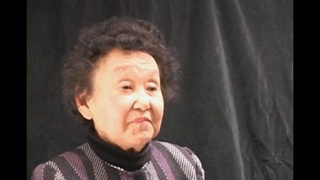Interviews
Return to Los Angeles
Here I was in this camp and the news came out that they were reopening the west coast. Anyone that wanted to go back would be allowed to. There was a great deal of reticence on the part of the majority of people who were interned. They were cursed on, cursed at, yanked out of their homes, ripped off of their possessions and thrown into this place with barbed wire. It wasn’t that easy of a decision for them to say OK we’re going back to this place where all that happened.
I was young enough, naive enough to decide “I’m going back.” that’s where Jefferson High School comes back into play because I figured if anything happened and things became unpleasant I’d go run and hide into one of those areas like that. I’d probably still maintained a few high school friends, at least that was my thinking. Came out and settled into a hostel that existed in Boyle heights. I think it was on Evergreen. I have an idea that was where I made phone calls to Disney studios.
Date: August 6, 1998
Location: California, US
Interviewer: Janice Tanaka
Contributed by: Watase Media Arts Center, Japanese American National Museum








